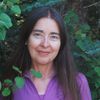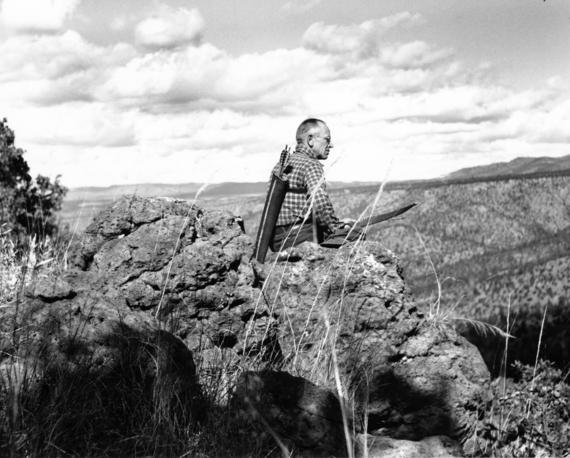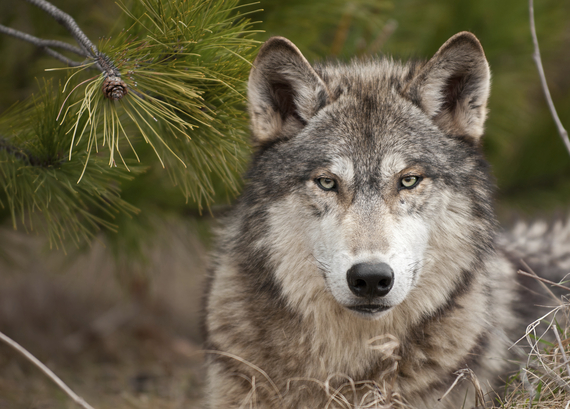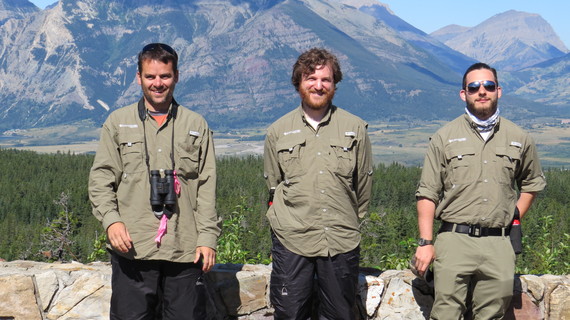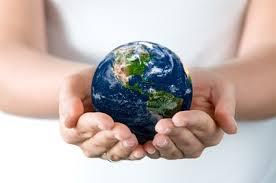In the mid-1940s, American conservationist and wildlife biologist Aldo Leopold articulated his now-famous land ethic statement, "A thing is right when it tends to preserve the integrity, stability, and beauty of the biotic community. It is wrong when it tends otherwise." The simplicity of Leopold's land ethic belies the fact that it resulted from a lifetime afield, reflections on his own mistakes, and awareness that every living thing has value in an ecosystem.
Aldo Leopold, Photo Courtesy the Aldo Leopold Foundation
When he wrote these words, Leopold was proposing restoring the wolf to Yellowstone and other national parks. He was deeply immersed in educating the public and wildlife managers about the fundamentals of ecology, as applied to a Wisconsin deer population explosion. He argued passionately that game management had to shift from a focus on economics and extraction to a more holistic view of the biotic community--one that included ethics and aesthetics and restoring all species, including predators.
Mexican Gray Wolf, Photo by David Parsons
Because it addressed nature in moral as well as economic terms, Leopold's revolutionary statement became the bedrock of the 1960s and 1970s environmental movement. It's led us to greater awareness of our relationship with the natural world as we determine how to best manage and conserve it, opened the door for species recovery, and provided food for thought for philosophers and scientists alike.
Ideas such as Leopold's inspired the creation of Earthwatch Institute, where I work as the chief scientist. Since 1971, our organization has been enabling people from all walks of life to join leading scientists working on crucial environmental research. Our mission is to engage people worldwide in scientific field research and education to promote the understanding and action necessary for a sustainable environment.
However, much has changed in the 45 years since Earthwatch's founding by Brian Rosborough. Today, climate change, an exploding human population, enormous global economic challenges, and a more conservative political climate have significantly increased the conservation problems the world faces. Our organization strives to support rigorous science that enables people to take action to address these problems.
Most of our Earthwatch staff consists of millennials--the generation who reached adulthood around the turn of the 21st century. Like all millennials, they hold the Earth's future in their hands. They hail from diverse academic backgrounds, but when you ask about their life goals, the concept of sustainability rapidly comes up. This is fitting, as they've inherited the problems created by previous generations, which include over-consumption of resources, ecological degradation, a burgeoning national debt, and mass extinction.
Millennials Chris Anderson, Jason Kirkey, and Corwin Scott
Working on an Earthwatch Project, Photo by Cristina Eisenberg
In our Boston office, the Science Club meets monthly to read scientific journal articles and books and discuss topics relevant to science and conservation. Recently, we read Leopold's book, A Sand County Almanac. After a lively discussion about how his words and insights are even more relevant now than when he wrote them 65 years ago, I asked our staff to create a millennial land ethic--one that reflects what we know now that we didn't know in Leopold's era. In other words, what would Aldo do today?
Today's millennials know that creating a healthier, more sustainable world won't be as simple as we imagined in 1970. Some of the millennials in the Earthwatch office urged a big-picture approach that puts science and ethics firmly at the forefront. Zachary Zimmerman wrote, "It took millions of years for our universe to engineer something as infinitesimally unlikely as life, and many more to establish a balance between all its forms across the planet. Let us not be so arrogant as to think we are ready to step up to that drawing board with but a few hundred years under our belts." Keegan Dougherty stated, "The natural world is our own, but it does not belong to us. It is impossible to restore, only to nudge creation to start anew. It is right to encourage land that is naturally productive, biodiverse, stable, and integrated with the wider world."
Other Earthwatch millennials focused on making their language more precise and reflective of new science about the complexity of ecosystems. This meant eliminating fuzzy words such as "integrity" and replacing them with ecological terms. Elise Begin wrote, "A thing is right when it tends to restore or preserve the resilience, stability, complexity, and beauty of the biotic community. It is wrong when it tends otherwise," and Laura St. Andrews contributed, "A thing is right when it tends to preserve the complexity, stability, and beauty of the biotic community's natural destiny. It is wrong when it tends otherwise."
The idea of how far we go to fix nature came up. Ali Soofi stated, "A thing is cooperative (balanced) when it tends to preserve the biodiversity, connectivity and natural, indigenous, aesthetic of the biotic community sustainably. A thing is disruptive (unbalanced) when it tends otherwise," and Jacob Samborn wrote, "A thing is inculpable, blameless, when it neither inhibits nor propagates against the natural selective pressures of the biotic community. To tend otherwise is artificial."
So what would Aldo do if he were alive now? He'd embrace ecological complexity in finding solutions. He'd adhere to ethics in making decisions about our natural resources. As in the 1930s and 1940s, he'd hold our leaders and government managers accountable for maintaining the health of the land, even tethered by economic feasibility. Finally, he'd be as inspired as I am by the millennial generation and their vision for a healthier, more intact planet.
Earthwatch millennials give me great hope. Under their watch and in their capable hands, they'll apply, in Leopold's words, "gentler and more objective criteria" to sustain the natural world and all its diversity and beauty.
* * *
Learn more about carnivore conservation by reading The Carnivore Way: Coexisting with and Conserving North America's Predators, and The Wolf's Tooth: Keystone Predators, Trophic Cascades, and Biodiversity by Dr. Cristina Eisenberg. Learn more about large carnivore ecology by joining Cristina afield on her Earthwatch research expedition, Tracking Fire and Wolves through the Canadian Rockies.
